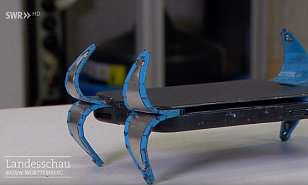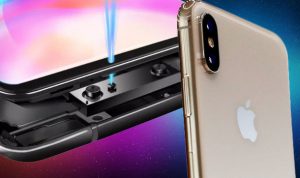
An end to cracked screens? Student invents an AIRBAG for your phone with built-in springs that deploy when your device is in free-fall

For people who constantly drop their phones, a German student may have come up with a solution.
An ‘active damping’ (AD) phone case has built-in sensors and eight springs that look like hooks.
The sensors can automatically detect when the phone is in free fall, and then deploy the springs to catch the phone when it hits the ground.
Scroll down for video

The designer Philip Frenzel, a student from Aalen University in Germany, calls his invention an ‘airbag’ for smartphones.
Each corner has two springs, but it is currently unknown what measures are in place to stop the case from activating accidentally.

A video shows the phone bouncing harmlessly after the user drops it.
After picking it back up, the user can simply fold the springs back into the case so it’s ready for the next drop.
Frenzel won the top award from the German Society for Mechatronics for his phone case, even though the design is still a prototype.
He has also patented the technology, meaning the case could be readily available to consumers in the near future.
The case appears to work perfectly on flat surfaces, but there is no indication that results would be as solid if the phone is dropped on a jagged or uneven edge.
While there are plenty of options on the market, from waterproof cases to ones that claim to be ‘indestructible’, there may not be another one that ‘bounces’.
IS YOUR ANDROID PHONE TRACKING YOUR EVERY MOVE?
Your Android smartphone could be tracking your every move, even when location services are switched off, it has emerged.
Handsets running the Google-developed operating system collect information about where you have been, transmitting it back whenever they connect to the internet.
They continue to do so, even when there is no SIM card inserted or apps running, it is claimed.
The finding raises worrying privacy concerns over the gathering of such detailed location data.

Knowing the location of one nearby cell tower is not enough to identify the specific location of a handset, and it’s user.
But by using data from multiple towers, a location can be triangulated within about a quarter-mile radius.
This becomes even more precise in built up areas like cities.
Although the data sent is encrypted, a third party could make use of it if the handset has been infected with spyware, malware or other hacking tools.
Every handset also has a unique ID number that can be associated with the location data.
Location-sharing does not appear to have been limited to a particular brand of Android phone or tablet.
Discover more from TOKTOK9JA MEDIA
Subscribe to get the latest posts sent to your email.
























